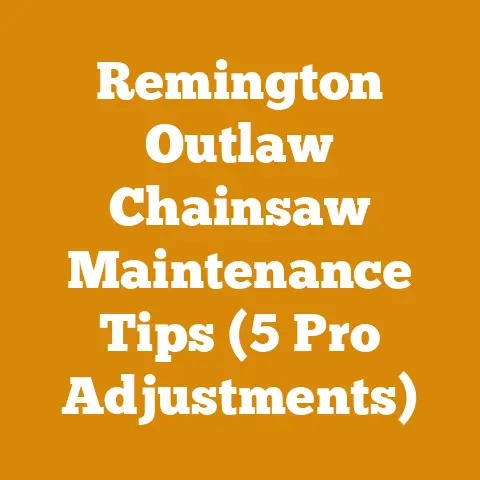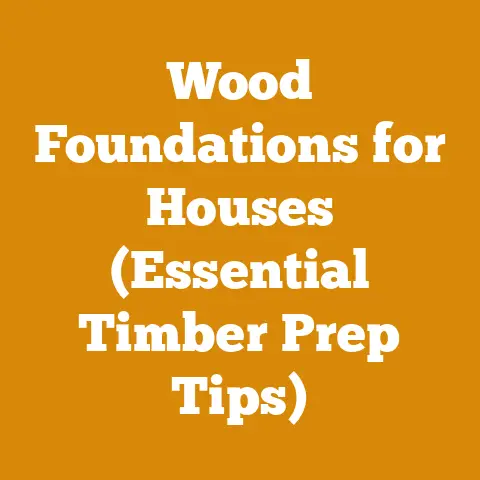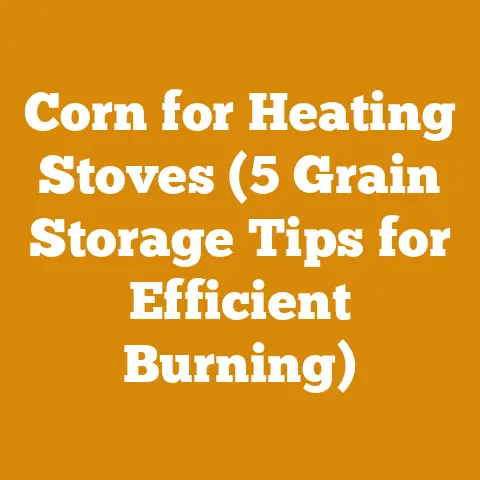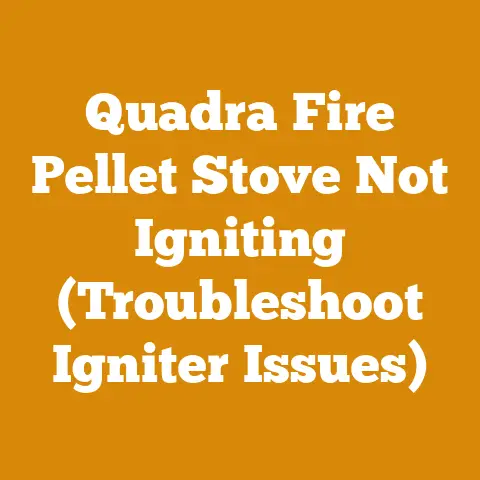Outdoor Wood Furnace Boiler Heat Exchanger (5 Pro Tips for Efficiency)
Outdoor Wood Furnace Boiler Heat Exchanger: 5 Pro Tips for Efficiency and Budgeting
When considering heating your home with an outdoor wood furnace boiler, the upfront cost can be daunting. Let’s face it, these systems are a significant investment. But with careful planning and a solid understanding of the factors involved, you can navigate the budgeting process effectively. We’ll explore various budget tiers, from the bare-bones DIY setup to a professionally installed, top-of-the-line system, and how each impacts your long-term efficiency and cost savings. This article will help you understand these costs, and I’ll share some personal experiences and data-backed insights to help you make the best decision for your needs and budget.
Introduction: Budgeting for Wood-Fired Warmth
Outdoor wood furnaces offer an attractive alternative to traditional heating methods, especially if you have access to a sustainable wood supply. However, the initial cost and ongoing expenses can vary widely. Before diving into the “5 Pro Tips for Efficiency,” let’s outline some basic budget options to set the stage:
-
DIY Enthusiast (Low Budget): This involves purchasing a used or basic outdoor wood furnace, handling most of the installation yourself, and sourcing wood affordably (or even free). Expect to spend $3,000 – $7,000 initially, with a higher reliance on your own labor and potentially less efficiency.
-
Mid-Range Solution: A new, moderately sized outdoor wood furnace with some professional installation assistance. You might handle the outdoor plumbing connections yourself but hire an electrician for the control panel. Budget $8,000 – $15,000.
-
Premium Investment: A high-efficiency, EPA-certified outdoor wood furnace, professionally installed with advanced features like automated controls and sophisticated heat exchangers. This option can range from $16,000 – $30,000 or more.
The key is to balance your upfront investment with the potential long-term savings on heating costs and the amount of labor you’re willing to invest. Now, let’s delve into the 5 pro tips that will significantly impact both efficiency and your budget.
1. Sizing is Everything: Avoid Overspending and Inefficiency
The Pitfall of Oversizing: I’ve seen it time and again – homeowners purchasing an outdoor wood furnace that’s far too large for their heating needs. It’s a common misconception that bigger is always better. In reality, an oversized furnace cycles on and off frequently, leading to incomplete combustion, wasted fuel, and increased creosote buildup. It’s like using a sledgehammer to crack a walnut – overkill and inefficient.
The Goldilocks Zone: The sweet spot is finding a furnace that’s appropriately sized for your home’s square footage, insulation levels, and climate. A properly sized furnace will run more consistently, burn fuel more efficiently, and require less maintenance.
How to Calculate Your Heating Load: This is where the data comes in. You need to determine your home’s heating load, measured in BTUs (British Thermal Units). Here’s a simplified method:
- Calculate Square Footage: Measure the total square footage of your living space.
- Determine Heating Zone: Consult a heating zone map (available online from various government and industry sources) to determine your region’s heating degree days (HDD). HDD reflects how far the average daily temperature falls below 65°F (18°C) over a heating season.
-
Estimate BTU Requirement: Use a BTU per square foot factor based on your climate and insulation. A general guideline is:
- Poor Insulation: 50-60 BTU/sq ft
- Average Insulation: 40-50 BTU/sq ft
- Good Insulation: 30-40 BTU/sq ft
Multiply your square footage by the appropriate BTU/sq ft factor to estimate your total BTU requirement.
Example: Let’s say you have a 2,000 sq ft home with average insulation in a region with 6,000 HDD. Using a 45 BTU/sq ft factor, your estimated heating load is 2,000 sq ft x 45 BTU/sq ft = 90,000 BTU.
Furnace Sizing: Choose a furnace with a BTU output that closely matches your calculated heating load. A slight undersizing (within 10%) is preferable to oversizing.
Cost Implications:
- Oversized Furnace: Higher purchase price, increased fuel consumption (potentially 20-30% more), shorter lifespan due to frequent cycling.
- Properly Sized Furnace: Lower purchase price, optimal fuel efficiency, longer lifespan, reduced maintenance costs.
Actionable Tip: Before purchasing any furnace, have a professional heating contractor perform a heat loss calculation to determine your exact BTU requirements. This investment will pay dividends in the long run.
2. Heat Exchanger Materials: Choosing Durability and Efficiency
The Heart of the System: The heat exchanger is the component within the furnace that transfers heat from the combustion chamber to the water that circulates throughout your heating system. The material it’s made from significantly impacts its efficiency, lifespan, and cost.
Common Materials:
- Mild Steel: The most common and affordable option. However, it’s susceptible to corrosion, especially in high-temperature, acidic environments. Lifespan can be limited to 5-10 years with proper maintenance.
- Stainless Steel: More expensive than mild steel, but significantly more resistant to corrosion. Offers a longer lifespan (15-25 years or more) and better heat transfer properties.
- Titanium: The premium choice. Extremely corrosion-resistant and offers excellent heat transfer. The most expensive option, but can last for decades.
Cost Breakdown:
| Material | Cost Factor (Relative to Mild Steel) | Lifespan (Estimated) | Heat Transfer Efficiency |
|---|---|---|---|
| Mild Steel | 1.0 | 5-10 years | Medium |
| Stainless Steel | 1.5 – 2.0 | 15-25+ years | High |
| Titanium | 3.0 – 5.0 | 30+ years | Very High |
My Experience: I once helped a friend replace a mild steel heat exchanger that had corroded through after only 7 years. The cost of the replacement, plus the labor, almost equaled the cost of a new furnace. He regretted not investing in a stainless steel model initially.
The pH Factor: Water pH plays a crucial role in heat exchanger longevity. Ideal pH levels are between 7.0 and 8.5. Acidic water (pH below 7.0) accelerates corrosion. Regularly testing and treating your water is essential, regardless of the heat exchanger material.
Actionable Tip: Invest in a stainless steel heat exchanger if your budget allows. The increased lifespan and improved efficiency will offset the higher initial cost over the long run. Always maintain proper water pH levels to prevent corrosion.
3. Insulation is Key: Minimizing Heat Loss and Maximizing Savings
The Neglected Factor: Many homeowners overlook the importance of proper insulation when installing an outdoor wood furnace. It’s like trying to heat your home with the windows open – you’re wasting energy and money.
Insulation Points:
- Furnace Body: Ensure the furnace itself is adequately insulated. Look for models with thick insulation layers to minimize heat loss to the surrounding air.
- Underground Piping: Insulate the underground piping that carries hot water from the furnace to your home. This is critical, especially in colder climates. Uninsulated pipes can lose a significant amount of heat, reducing the efficiency of your system.
- Building Entry Points: Seal any gaps or cracks where the pipes enter your home to prevent air leaks.
Insulation Materials:
- Spray Foam: Offers excellent insulation and sealing properties. Ideal for insulating the furnace body and sealing entry points.
- Wrap Insulation: Flexible and easy to install around underground pipes. Choose a waterproof, UV-resistant wrap for outdoor use.
- Rigid Foam Boards: Can be used to insulate the base of the furnace or create an insulated enclosure.
Cost-Benefit Analysis:
| Insulation Type | Material Cost (per linear foot or sq ft) | Installation Cost (DIY vs. Professional) | R-Value (Resistance to Heat Flow) |
|---|---|---|---|
| Wrap Insulation | $1 – $3 | DIY: Low; Professional: Moderate | R-4 to R-8 |
| Spray Foam | $0.50 – $1.50 per board foot | DIY: Moderate; Professional: High | R-6 to R-7 per inch |
| Rigid Foam Boards | $1 – $5 | DIY: Moderate; Professional: Moderate | R-3 to R-8 per inch |
Data Point: Studies have shown that properly insulating underground pipes can reduce heat loss by as much as 50%, resulting in significant fuel savings.
My Experience: I insulated my underground pipes with high-density wrap insulation and noticed a noticeable difference in the water temperature entering my home. My wood consumption decreased by about 15% that winter.
Actionable Tip: Invest in high-quality insulation for your furnace and underground piping. The initial cost will be quickly recouped through reduced fuel consumption and increased efficiency.
4. Combustion Efficiency: The Key to Fuel Savings
Burning Smarter, Not Harder: The combustion efficiency of your outdoor wood furnace directly impacts how much heat you get from each piece of wood. Incomplete combustion results in wasted fuel, increased emissions, and creosote buildup.
Factors Affecting Combustion Efficiency:
- Furnace Design: EPA-certified furnaces are designed for cleaner, more efficient combustion. They often feature secondary combustion chambers and air injection systems.
- Wood Moisture Content: Burning wet wood significantly reduces combustion efficiency. Wet wood requires energy to evaporate the water before it can burn, resulting in lower temperatures and incomplete combustion.
- Airflow: Proper airflow is essential for complete combustion. Ensure your furnace has adequate air intake and that the flue is clean and unobstructed.
- Wood Species: Different wood species have different BTU values per cord. Hardwoods like oak and maple provide more heat than softwoods like pine and fir.
EPA Certification: EPA-certified furnaces are required to meet strict emission standards and demonstrate high combustion efficiency. While they typically cost more upfront, they offer significant long-term savings on fuel and reduce your environmental impact.
Wood Moisture Content: The ideal moisture content for firewood is between 15% and 20%. Use a moisture meter to check the moisture content of your wood before burning it.
Seasoning Firewood: Seasoning firewood involves allowing it to air dry for 6-12 months. This reduces the moisture content and makes it burn more efficiently.
Cost Implications:
- Wet Wood: Reduced combustion efficiency (up to 50% less heat), increased fuel consumption, increased creosote buildup, potential for chimney fires.
- Dry Wood: Optimal combustion efficiency, reduced fuel consumption, cleaner burning, less creosote buildup.
Data Point: Burning properly seasoned firewood can increase combustion efficiency by as much as 30% compared to burning wet wood.
Wood BTU Chart (Approximate BTU per Cord):
| Wood Species | BTU per Cord (Approximate) |
|---|---|
| Oak | 24-30 million |
| Maple | 20-26 million |
| Birch | 20-24 million |
| Ash | 20-24 million |
| Pine | 12-18 million |
| Fir | 12-16 million |
My Experience: I switched from burning unseasoned pine to seasoned oak and saw a dramatic improvement in my furnace’s efficiency. I used about half as much wood and had significantly less creosote buildup in my chimney.
Actionable Tip: Invest in an EPA-certified furnace and burn only properly seasoned firewood. This will maximize combustion efficiency, reduce fuel consumption, and minimize maintenance costs.
5. Regular Maintenance: Preventing Costly Repairs
A Stitch in Time Saves Nine: Regular maintenance is crucial for keeping your outdoor wood furnace running efficiently and preventing costly repairs. Neglecting maintenance can lead to reduced efficiency, increased fuel consumption, and premature failure of components.
Maintenance Tasks:
- Chimney Cleaning: Clean your chimney regularly to remove creosote buildup. Creosote is a flammable substance that can cause chimney fires. The frequency of cleaning depends on the type of wood you burn and the efficiency of your furnace.
- Water Treatment: Regularly test and treat your water to maintain proper pH levels and prevent corrosion.
- Ash Removal: Remove ash from the firebox regularly to ensure proper airflow and combustion.
- Gasket Inspection: Inspect and replace worn gaskets around the firebox door and other access points to prevent air leaks.
- Pump Inspection: Inspect and lubricate the circulating pump regularly to ensure it’s running smoothly.
- Heat Exchanger Cleaning: Clean the heat exchanger periodically to remove any buildup of soot or scale.
Cost of Neglect:
- Chimney Fire: Can cause significant damage to your home and furnace.
- Corrosion: Can lead to leaks in the heat exchanger and other components, requiring costly repairs or replacement.
- Reduced Efficiency: Increased fuel consumption and higher heating costs.
- Premature Failure: Shortened lifespan of the furnace.
Maintenance Schedule:
| Task | Frequency | Estimated Cost (DIY vs. Professional) |
|---|---|---|
| Chimney Cleaning | Annually | DIY: $50 – $100 (tools); Professional: $150 – $300 |
| Water Treatment | Monthly | $10 – $20 per month |
| Ash Removal | Weekly | Free |
| Gasket Inspection | Annually | Free |
| Pump Inspection | Annually | Free |
| Heat Exchanger Cleaning | As Needed | DIY: $20 – $50 (cleaners); Professional: $100 – $200 |
My Experience: I neglected to clean my chimney one year and ended up having a minor chimney fire. Fortunately, I caught it early and was able to extinguish it before it caused any serious damage. But it was a wake-up call – I now make chimney cleaning a top priority.
Actionable Tip: Establish a regular maintenance schedule for your outdoor wood furnace and stick to it. This will prevent costly repairs and ensure your furnace runs efficiently for years to come.
Additional Cost Considerations: Beyond the Furnace Itself
While the furnace and its efficiency are paramount, several other cost factors influence your overall investment. Overlooking these can lead to budget overruns and unexpected expenses.
1. Installation Costs:
- DIY vs. Professional: As mentioned in the introduction, DIY installation can save money, but requires significant time, skill, and potentially specialized tools. Professional installation ensures proper setup, adherence to local codes, and often includes a warranty.
- Permits and Inspections: Check your local regulations for required permits and inspections. These can add to the overall cost but ensure safety and compliance.
- Plumbing and Electrical Work: Connecting the furnace to your existing heating system requires plumbing and electrical work. The complexity of this work will influence the cost.
Cost Breakdown:
| Task | DIY Cost (Estimated) | Professional Cost (Estimated) |
|---|---|---|
| Permit Fees | Varies by Location | Varies by Location |
| Plumbing Connections | $200 – $500 | $500 – $1,500 |
| Electrical Connections | $100 – $300 | $300 – $800 |
| Site Preparation | $100 – $300 | $300 – $1,000 |
2. Fuel Costs:
- Wood Source: The cost of wood varies widely depending on your location and source. Options include:
- Self-Harvesting: Free (but requires time, labor, and equipment).
- Purchasing from a Supplier: Varies by cord and wood species.
- Contracting with a Logger: Negotiate a price per cord or ton.
- Transportation: Factor in the cost of transporting wood from the source to your home.
- Storage: Proper wood storage is essential for seasoning and preventing rot. Consider the cost of building or purchasing a wood shed.
Fuel Cost Analysis:
- Average Price per Cord (Seasoned Hardwood): $200 – $400 (regional variations apply)
- Equipment Costs (Chainsaw, Splitter, etc.): $500 – $2,000 (depending on quality and features)
- Labor Costs (Self-Harvesting): Opportunity cost of your time.
3. Ongoing Operating Costs:
- Electricity: Outdoor wood furnaces require electricity to power the circulating pump and control panel.
- Water Treatment Chemicals: Cost of chemicals for maintaining proper water pH levels.
- Repairs and Maintenance: Budget for potential repairs and maintenance tasks.
Actionable Tip: Create a detailed budget that includes all of these cost factors. This will help you avoid unexpected expenses and make informed decisions about your investment.
Case Study: Comparing Budget Options
Let’s illustrate the cost implications with a hypothetical case study. Imagine a homeowner in a cold climate with a 2,000 sq ft home. We’ll compare three budget options: DIY, Mid-Range, and Premium.
Option 1: DIY Enthusiast
- Furnace: Used, basic model: $4,000
- Installation: DIY (plumbing and electrical): $500 (materials)
- Insulation: Basic wrap insulation: $200
- Wood Source: Self-harvesting (equipment costs): $1,000 (chainsaw, splitter)
- Annual Fuel Cost: 8 cords x $0 (self-harvested) = $0
- Annual Maintenance: $100
- Total Initial Cost: $5,700
- Estimated Annual Operating Cost: $100
Option 2: Mid-Range Solution
- Furnace: New, moderately sized model: $10,000
- Installation: Partial professional installation (electrical): $1,000
- Insulation: High-density wrap insulation: $500
- Wood Source: Purchased seasoned hardwood: 6 cords x $300 = $1,800
- Annual Fuel Cost: $1,800
- Annual Maintenance: $200
- Total Initial Cost: $11,500
- Estimated Annual Operating Cost: $2,000
Option 3: Premium Investment
- Furnace: New, EPA-certified, high-efficiency model: $20,000
- Installation: Professional installation: $3,000
- Insulation: Spray foam and high-density wrap insulation: $1,000
- Wood Source: Purchased seasoned hardwood: 4 cords x $300 = $1,200
- Annual Fuel Cost: $1,200
- Annual Maintenance: $300
- Total Initial Cost: $24,000
- Estimated Annual Operating Cost: $1,500
Analysis:
- The DIY option has the lowest initial cost but requires significant labor and may result in higher fuel consumption due to lower efficiency.
- The Mid-Range solution offers a balance between cost and efficiency.
- The Premium investment has the highest initial cost but offers the lowest annual operating cost due to its high efficiency and reduced fuel consumption.
Payback Period: To determine which option is the most cost-effective in the long run, you need to calculate the payback period – the time it takes for the savings in operating costs to offset the higher initial investment. This calculation will depend on your specific circumstances and fuel costs.
Global Timber Prices and Fuelwood Market Rates
Understanding global timber prices and fuelwood market rates provides context for your wood sourcing decisions. These prices are influenced by factors such as:
- Demand: Increased demand for timber and fuelwood drives up prices.
- Supply: Forest fires, insect infestations, and other factors that reduce timber supply can also increase prices.
- Transportation Costs: The cost of transporting wood from the forest to the market affects the final price.
- Government Regulations: Regulations related to logging and forestry can impact timber prices.
Data Sources:
- Global Forest Products Outlook Study (FAO): Provides data on global timber production, consumption, and prices.
- Regional Timber Market Reports: Available from various industry associations and government agencies.
- Fuelwood Market Surveys: Conducted by local and regional organizations.
General Trends:
- Timber prices tend to be higher in developed countries with stricter environmental regulations.
- Fuelwood prices are often lower in rural areas with abundant forest resources.
- Prices fluctuate seasonally, with higher prices during the winter months.
Actionable Tip: Research local timber prices and fuelwood market rates to find the most affordable wood source in your area.
Conclusion: Mastering the Art of Wood-Fired Heating
Investing in an outdoor wood furnace boiler can be a wise decision, providing a sustainable and cost-effective heating solution. By carefully considering these five pro tips – sizing, heat exchanger materials, insulation, combustion efficiency, and regular maintenance – you can optimize your system’s performance, minimize your fuel consumption, and save money in the long run. Remember to factor in all cost components, from installation to fuel to ongoing maintenance, and create a detailed budget to guide your decisions.
Don’t be afraid to get your hands dirty, ask questions, and learn from others’ experiences. With careful planning and a bit of elbow grease, you can master the art of wood-fired heating and enjoy the warmth and comfort of a wood-heated home for years to come.






